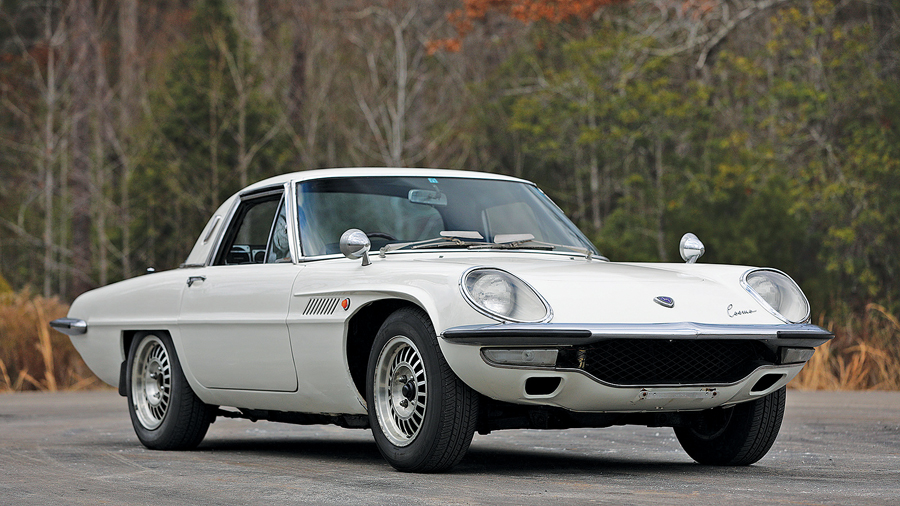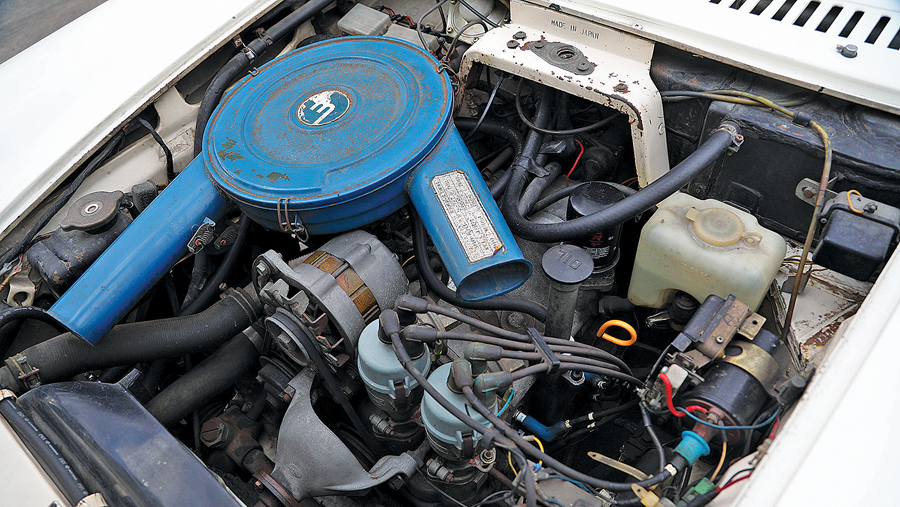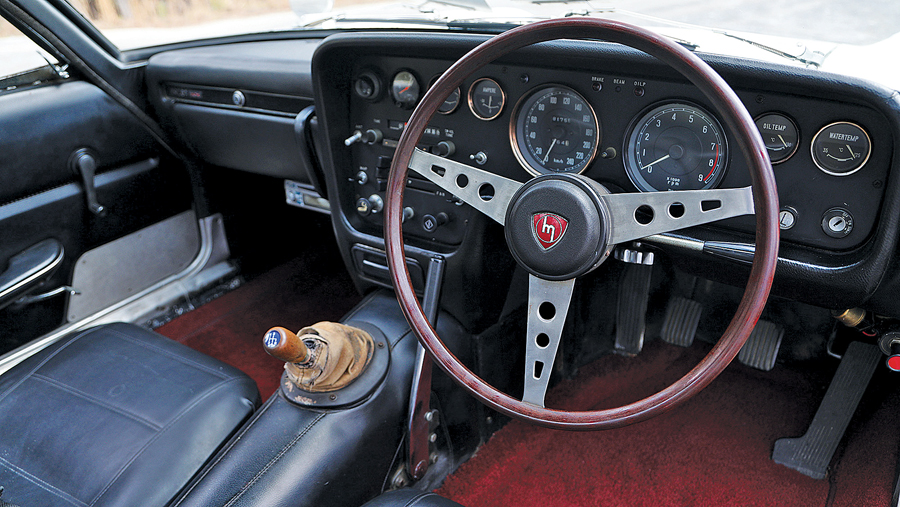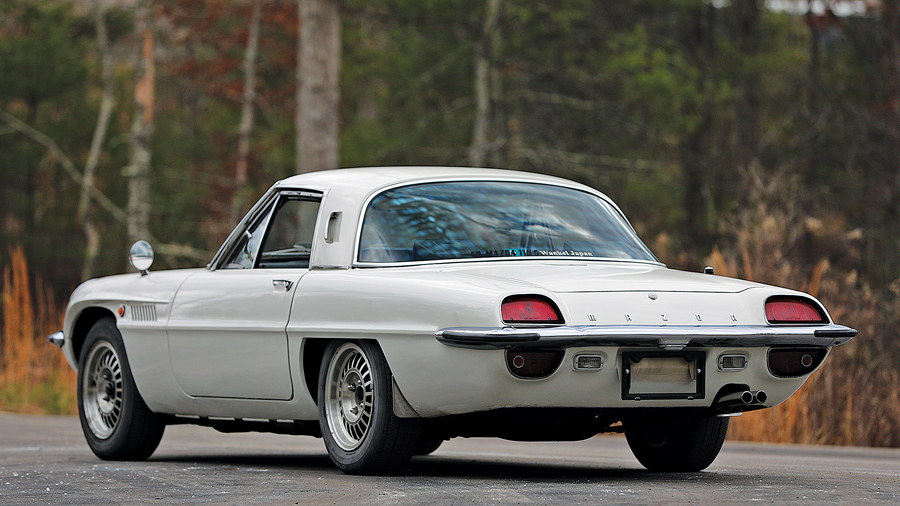SCM Analysis
Detailing
| Vehicle: | 1970 Mazda Cosmo 110S coupe |
| Years Produced: | 1967–72 |
| Number Produced: | 1,519 |
| Original List Price: | ¥1,480,000 ($13,128 in 2017) |
| SCM Valuation: | $115,500 |
| Tune Up Cost: | $300 |
| Distributor Caps: | $50 |
| Chassis Number Location: | Data plate on center of cross bar at front under hood (Series II); stamped into firewall under hood on left footwell (both SI and SII) |
| Engine Number Location: | Underneath alternator |
| Club Info: | Cosmo Sport Car Owners Club |
| Website: | http://www.cosmosport.net |
| Alternatives: | 1970–78 Nissan Fairlady Z, 1967–68 Mazda Cosmo Series I, 1968–72 Mazda Cosmo Series II |
| Investment Grade: | B |
This car, Lot 166, sold for $44,000, including buyer’s premium, at The Finest’s auction in Boca Raton, FL, on February 11, 2017.
The Mazda Cosmo Sport was Mazda’s first attempt at a 2-seater sports car. The prototype was first shown off at the 1964 Tokyo Motor Show, and a final production model was shown at the 1965 and 1966 Tokyo Motor Shows before it was released to the public the next year.
What made this car unique was the licensed Wankel Rotary engine. The Cosmo Sport was the first car to have a practical and mass-produced Wankel engine. Previous versions of the Wankel engine were used in motorcycles — and helicopters. NSU was the first to produce a car with a Wankel engine, but they failed to make it reliable in the first release.
The Wankel engine included in the Series I Cosmo Sport was the 10A. The 10A had a 4-barrel Hitachi carb setup for the twin-rotor engine. The 982-cc setup produced 110 ps (metric horsepower, which converts to 108.5 hp), which is where the 110 model name came from. Mazda chose this engine to keep the annual road tax on the car low, as the engine fell under the 1-liter mark. The car was light enough, weighing in at 2,072 pounds, that it had a top speed of 114 mph and did 0–400 meters (1,312 feet) in 16.3 seconds.
A special mix of two models
Before this car was assigned to me to profile, I was asked why this car sold for the price it did — and if restoring it would be feasible. I went to the Internet with my Google Translate and jumped on Yahoo Auctions Japan and Google.co.jp to begin my search. Oddly enough, with the right amount of katakana, I found this exact car listed on a vintage car shop in Japan.
I tried to jump into the Wayback Machine to see if I could find the original price, but I could not. I did find that the car sold sometime before or during 2015.
The ad states some of the details The Finest also lists in their auction description. The car was first registered in the 45th Shōwa period (1970), and that the car was made for export (110S). It went on to describe the car as very rare in the sense that it was a combination of the “zenki-gata” (early type) and the “kouki-gata” (late type). You see, export models are actually a combination of the Series 1 (zenki-gata) and Series II (kouki-gata). They used remaining Series I cars and 10A engines, along with the Series II large air dam.
Looking over the photos of the listing and comparing them with the photos provided by The Finest, the car looks like it was never touched between being sold in Japan and being sold in Boca Raton.
It has the same wheels on it, the same deck-lid aftermarket speakers (a popular add-on in the 1980s), and the same seat covers. I wasn’t able to compare the mileage via photo, but the Japanese listing states (a possible rounded up) 82,000 km (50,952 miles), while The Finest’s photos show 81,755 km. It is safe to say that this car was imported and barely touched.
Why so cheap?
Why was this car so much cheaper than other Mazda Cosmo Sports we have seen at auction? I wrote about another Mazda Cosmo Sports in my “Rising Sun” column in the February 2017 issue of Sports Car Market (p. 158). That car was in fairly good shape. The exterior was repainted and rebuilt 12 years ago. It sold on Yahoo Auctions Japan for ¥5,201,000 ($46,262). This is not too far off from our price on this car.
I did some more research to find out whether other Cosmo Sports recently sold in Japan. I found a Series II on Yahoo Auctions Japan that sold for ¥2,500,000 ($21,990). The car needed a lot of work. The front bumper was missing, the rear bumper was rusted, the taillights were missing their lenses, there was rust all over the hood and trunk, and the interior was ripped up. The car also had aftermarket wheels and rust on the firewall. The seller didn’t even include an image of the engine, but I assume it was in a poor state as well.
This car that sold at The Finest looked like it was used — and cared for. It was a great example of a driver that you could hop in and enjoy right now.
It was also purchased at a great price, so you could use the extra cash to have it restored. Finding the parts could be more difficult in the United States, but reaching out to Cosmo owners and restoration shops in Japan would be a great start.
A market-correct price
This auction showed us the price of a Mazda Cosmo Sport in good shape. Our subject car lines up really close to the slightly better example that sold on Yahoo Auctions Japan. Our car brought much more money than the beat-up example on Yahoo Auctions Japan.
This sale doesn’t signal a value dip in Cosmo Sports. It is just another example of what the middle of the market looks like.
This car is unique because it is a 110S — a model made for export — but it was not exported out of Japan. This car, a combination of Series I and Series II Cosmo cars, is now just a standard export model that happened to stay in Japan on an extended visa. Well bought. ♦
(Introductory description courtesy of The Finest.)



